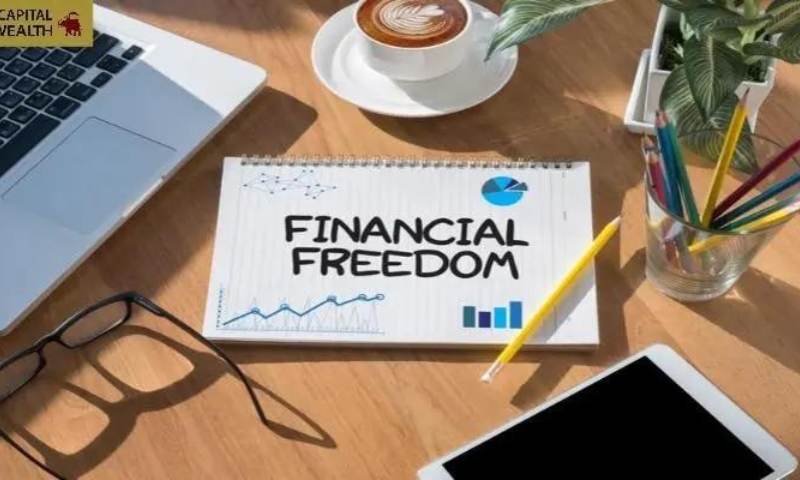Unlocking Financial Freedom: Benefits of Trustless Transactions Revealed
Imagine a world where you always know your money is safe. That’s the magic of trustless transactions. They take the guesswork out of the game. No more middlemen, no hidden terms. Just pure, secure exchange. Today, I’ll guide you through how this tech gives you more control than ever before. With blockchain and smart contracts, you’re in the driver’s seat. Ready to dive into a future where your finances are truly yours? Let’s explore the benefits of trustless transactions, and unlock the doors to financial freedom together.
The Core Concept of Trustlessness in Finance
Defining Trustless Systems and Their Role in Financial Transactions
Trustless systems let people trade without fear or doubt. They do not need a middleman. Instead, they use tech that makes sure everyone acts fair. This tech is called blockchain. It is a list of all deals made, seen by everyone, and can’t be changed. This keeps people safe from cheats.
Smart contracts make these safe trades happen. They are rules written in code that run on blockchain. When two people want to trade, the smart contract checks everything is okay. Then, it makes the trade happen alone. This means faster and cheaper deals for everyone.
The Technological Backbone: Exploring Blockchain and Smart Contracts
Blockchain and smart contracts are like peanut butter and jelly. They just work great together. Blockchain gives smart contracts a home that nobody can break into. This lets people make deals direct and quick.
In blockchain, a network of people check that new info is okay. This makes payments secure. It also makes sure people can’t cheat. Smart contracts use this to work their magic. They make sure the rules of a deal get followed every time. No ifs, ands, or buts.
Avoiding middlemen saves money. This is because banks and other middlemen charge fees. With blockchain, you can do it without them. That means more money stays in your pocket. This is great for everyone, especially people in places without good banks.
Using blockchain and smart contracts in trades has many big wins. It helps keep your money safe. It stops people from cheating. It cuts down the cost. And it includes more people in finance all over the world. These systems don’t care who you are or where you’re from. If you have internet, you can join in. This is how we break the old bank system and make it better for all of us.
Trustless systems are here to stay. They make our money world honest and open. They knock down walls that kept many out. With these tech tools, we’re making a new way to trade. A way that’s fair, fast, and open to all.
Overcoming Traditional Banking Limits with Trustless Transactions
Advantages of Decentralized Finance Over Conventional Models
Decentralized finance shakes up old bank methods. We get to skip the middleman. This means you don’t wait on someone’s okay for your money moves. You’re in direct control, day or night. Advantages here are big, like lower transaction fees. Why? Fewer people in the mix means fewer hands out for your cash.
How Smart Contracts and Peer-to-Peer Transactions Foster Financial Inclusion
Smart contracts make deals safe and easy. They’re like unbreakable promises on the blockchain. Also, they help everyone who uses them save time. Think about selling your bike online. You’d want to be sure you’ll get paid, right? Smart contracts ensure you do, without a third-party checking in.
Now look at peer-to-peer money trading. These exchanges let you send cash straight to someone else. We call this financial inclusion. Why? It opens the door for folks who’ve never had a bank. I believe this can change lives. People anywhere can now get and use money without big bank rules.
With trustless systems, there’s no need to prove who you are every time. The system’s design does that for you. It’s like having a guard who always knows you’re allowed in. This builds a kind of trust that doesn’t rely on humans. Instead, it relies on math and code, which don’t lie or make mistakes.
Transparency is another win. Blockchain secure payments show on a public list. Everyone can see them. That’s good because it means no funny business with your money. It’s all out in the open, which makes everyone play fair.
So, you get speed too. These trustless transactions happen in a flash. No waiting for banks to pass notes back and forth or to open and close. Sending cash through the blockchain is like sending a text. It’s quick, whether it’s to your neighbor or to someone across the sea.
By avoiding middlemen in finance, we get less risk and more value from each trade. It’s empowering to know you’re calling the shots with your money. And it’s just the start of what this tech can do.
Imagine a world where your cash works as hard as you do, without someone always dipping in. That’s what trustless transactions offer. More and more people are seeing how this can shift the way we think about and use money. Tomorrow’s finance is here today, not in fancy banks, but in our hands – each doing our own thing, together.
Enhancing Security and Transparency in Financial Activities
Immutability and Its Role in Reducing Transaction Fraud
People often worry about fraud when dealing with money. But with blockchain tech, this fear lessens. Why? Blockchain brings immutability. This means once a transaction is made, no one can change it. This is a key part of how trustless systems work.
Immutability’s most notable perk is reducing fraud in financial deals. Think of it like a tamper-proof box. Once you lock in the deal, it’s secure. No one, not hackers, not even the people who made the deal, can change it. So, if I send money to a friend, I can be sure that money goes to them and only them.
In a world where each day seems to bring news of a fresh scam, this is big. We can now enter into deals with confidence. We don’t have to rely as much on trust. The tech does that for us.
The Role of Automated Compliance and Transparency in Digital Transactions
Another big win for trustless tech is automated compliance. Smart contracts run these systems. What’s a smart contract, you ask? It’s a way to make deals that live on the blockchain. They self-execute based on rules everyone agrees on. This means less chance for funny business.
With smart contracts, transparency is a sure thing. Each step in a transaction is open for anyone involved to see. This way, people feel more at ease. They don’t wonder if things are happening that shouldn’t be.
When we talk about stuff like avoiding middlemen in finance, we’re talking freedom. No more waiting for banks to approve. No more high fees for just moving your own money. Smart contracts in transactions let us skip the middle guy. And you know what that means? Speed.
Peer-to-peer financial transactions allow for quick and direct money movement. It’s like handing cash to a buddy. But you can do it across vast distances. Best of all, it’s without someone you don’t know getting in the way.
Trustless transactions help bring about global financial inclusion. Imagine living in a tiny town with no bank nearby. Now, that’s no longer a roadblock to joining the global economy. All thanks to blockchain secure payments.
These benefits aren’t future dreams. They’re here right now. As we push for lower transaction fees and more financial freedom, trustless tech is at the heart. It lets us live with more control over our money. It does away with doubt, and keeps our deals clear and straight.
So, next time you’re thinking about how trustless transaction work, remember it’s all about making life easier. Safer. Fairer. It’s a step towards a future where we control our financial destiny, without fear or fuss. And that, my friends, is a future worth building towards.
The Economic Impact of Trustless Transaction Mechanisms
Evaluating Cost Efficiency and Lower Transaction Fees in Trustless Environments
Think of the last time you sent or received money. Chances are, banks or credit card firms got involved. They take a cut, right? Trustless systems change that game. By cutting out these middlemen, trustless environments offer a cheaper way to handle money. How? Well, by using blockchain secure payments. These systems let people send funds directly to each other. No need for a bank to say “okay” or take a slice of the pie.
Trustless systems like peer-to-peer financial transactions save money for everyone. They ditch unnecessary fees typically charged by banks and financial firms. Imagine sending cash straight to a friend across the world. No bank in the middle means not having to pay extra for the transfer. It’s that simple and it’s a huge plus for cost efficiency in trustless environments.
Examining the Speed and Direct Nature of Trustless Payments
Now, let’s chat about speed. Time is money, as they say. And in finance, that’s super true. Trustless transactions are fast – lightning-fast! They happen in real-time, using tech known as smart contracts. These are like digital deals that say: “When you do X, I’ll do Y.” And they happen without any humans checking up on them.
This speed comes from the trustless nature of cryptocurrencies and the blockchain consensus. When you make a transaction, it gets confirmed by a network of computers, not a person tired from a long day. This speeds things up a lot.
Using trustless payment processing, you can move money as fast as you can send an email. That’s because there’s no waiting for someone to open and check the transfer. Everything is automatic, secure, and without delays.
To sum up, trustless transactions rock because they save money and time, the most valuable things for many of us. These deals happen without the wait and without the extra costs. It’s a win-win! This is how we start to unlock true financial freedom for everyone, no matter where they are.
In this article, we dug into trustless finance, where we cut out middlemen and build on blockchain and smart contracts. We looked at how these systems shape money moves today. They let people transact without big banks, offering more control and fair play.
We discovered how this leap from old banking can include more folks and save them cash. Also, smart contracts mean deals are clear and fraud is tough to pull off. These tools promise fast, cheap payments and put honesty first.
Seeing money move in secure, open ways changes the game. This trustless world may seem complex, but it’s just about giving people power. It boils down to trust in coding, not in flawed systems. That’s progress, that’s future finance taking shape right before us. Keep your eyes peeled; finance is getting a tech-powered makeover!
Q&A :
What are the primary benefits of engaging in trustless transactions?
Trustless transactions, a fundamental concept in blockchain and cryptocurrency systems, offer several significant advantages. The first and most notable is increased security, as the decentralized nature of trustless systems means no central point of failure, reducing the risk of fraud and hacking. Moreover, trustless transactions enhance transparency since all transaction data is recorded on a public ledger, accessible by anyone at any time. They also offer greater privacy, as personal information isn’t required to execute transactions. Additionally, trustless environments can reduce transaction costs by eliminating middlemen and speeding up the settlement process, providing an overall more efficient way to conduct transactions.
How do trustless transactions ensure security without intermediaries?
In a trustless system, security is maintained through the use of cryptographic algorithms and consensus protocols. Transactions are recorded on a distributed ledger, and network participants, or nodes, must agree on the validity of transactions using a consensus mechanism such as Proof of Work or Proof of Stake. This ensures that no single entity has control over transaction approval, and all participants can trust the system despite not necessarily trusting each other. Every transaction is also encrypted and linked to the previous transaction, creating an immutable chain that is virtually impossible to alter without detection.
What role does blockchain play in trustless transactions?
Blockchain is the underlying technology that enables trustless transactions. It operates as a distributed ledger that records all transactions across a network of computers, ensuring that each transaction is added only after validation by the network participants. With blockchain, transactions are secured through cryptographic techniques, and once recorded, they cannot be altered retroactively. This ensures a high level of integrity and trust in the transaction process without the need for a central authority, thus enabling the key functionality of trustless transactions.
Can trustless transactions improve transaction efficiency and speed?
Trustless transactions can significantly improve both the efficiency and speed of transactions. By removing the need for intermediaries, transactions can occur directly between parties, reducing the time it takes to settle. Without intermediaries, the additional costs associated with these middlemen are also removed, leading to potentially lower transaction fees. The use of smart contracts can further automate processes and enforce contract terms automatically, speeding up the entire transaction lifecycle.
Are trustless transactions beneficial in cross-border trading?
Yes, trustless transactions can be especially beneficial in cross-border trading. Traditional cross-border transactions often involve multiple intermediaries, currency exchanges, and regulatory checks, which can cause delays and additional costs. Trustless transactions using blockchain technology can simplify the process by providing a secure and transparent way to transact directly with parties in other countries, regardless of the local currency or law. This level of efficiency and cost-effectiveness can make international trade more accessible and straightforward for businesses and individuals alike.


